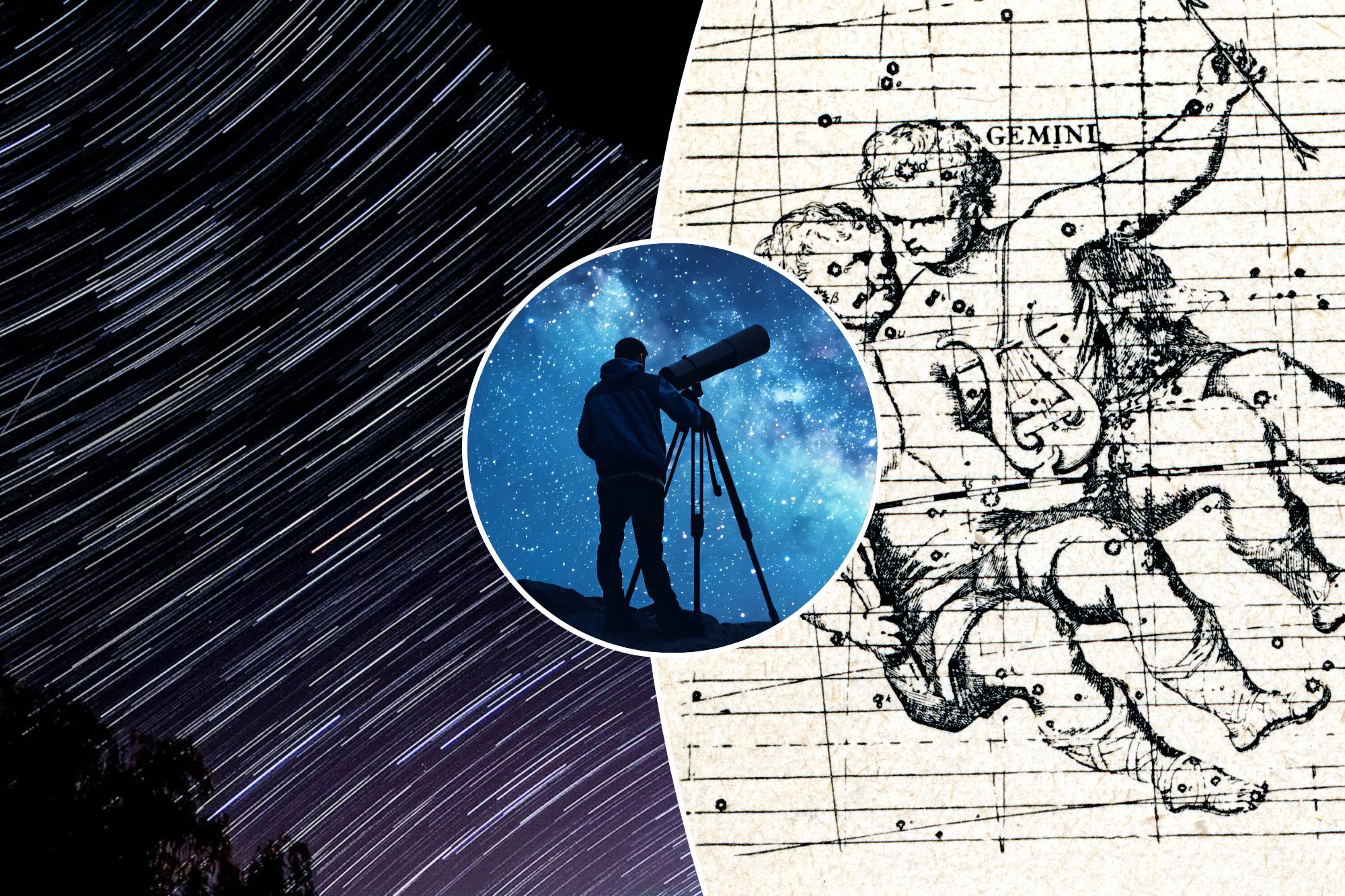
Find the darkness and collect your wishes, my babies: The annual Geminid meteor shower is upon us.
Gemini is the best and most trusted of the annual meteor showers — but this year, the waxing full moon in Gemini could interfere with optimal viewing.
Although the ever-loving moonlight will obscure some of the nicer meteors, the bright bad ones will still be visible—and definitely worth a look.
What is a meteor?
Meteors are born from comet particles and asteroid debris. When this glorious detritus travels around the sun, it leaves a trail behind it.
When the Earth passes through those paths, bits of space dust collide with our atmosphere and burn up on their own, and their breakup creates streams of color and fire in the sky.
Gemini is the early bird meteor shower as the sun sets in early December, and the constellation Gemini — from which it appears to originate — rises roughly an hour after nightfall, making the meteors visible relatively early in the evening.
While most meteors appear colorless or white, Gemini casts itself against the sky with a yellow or green hue, enhancing the viewing experience.
When is the Geminid meteor shower?
Gemini comes around every year, blessing us with their brilliance from mid-November to mid-December. This round, the showers will peak Friday night, December 13, into the early morning hours of December 14.
Watch for more hourly meteors starting around 9 a.m. with a crescendo at 2 a.m. and then declining at a rate of one or two per minute.
Mythology
The Geminid Ray, or point in the sky where they seem to originate, is the Gemini constellation for which they are named. This is not the source of the meteors but a visual indicator of them.
The constellation Gemini is associated with the myth of the mythological twins Castor and Pollux.
Gemini reminds us of the importance of intimacy, sacrifice, and a journey-or-death willing to give up forever for companionship, while also giving that we are made of Stardust and Stardust we are bound to return.
Castor was the mortal son of King Tyndareus and Pollux, the immortal descendant of Zeus, an ancient example of heteropaternal superfertility. (Google It; I’ll wait.) Good-looking and hardscrabble, the brothers were inseparable, fighting battles, sailing the seas, and swearing absolute loyalty to each other.
When Castor was fatally wounded in battle, Pollux, mad with grief, begged his father Zeus to save him.
Zeus, a placement father’s family members.
Metaphorically, Gemini reminds us of the importance of intimacy, sacrifice, and a journey-or-death willing to give up forever for companionship, while also establishing that we are made of Stardust and Stardust we shall return.
What is the difference between a comet and an asteroid?
Unlike most other meteor showers that originate from comets, Gemini receives from Asteroid 3200 Phaethon, named for Phaethon, son of the sun god (the name of the large cluster) Helios, who borrowed his father’s chariot until catastrophic ends.
The difference between a comet and an asteroid, you ask?
A comet, according to Earth Sky, is “a dirty snowball with a solid core covered by a layer of ice that sublimates (turns from a solid to a gas) as the comet approaches the sun. Comets orbit the sun in elongated, going near the sun, then going away from the sun.”
In contrast, and perhaps less poetically, an asteroid is a rock whose orbit around the sun is circular.
Like the demigod for which it is named, Phaethon is difficult to define. Per NASA: “It is possible that Phaethon is a ‘dead comet’ or a new type of object being discussed by astronomers called a ‘rock comet.’ ”
Where to look
The Geminid meteor shower will be visible across the globe, with maximum visibility in the Northern Hemisphere.
The best practice for meteor viewing is to find a location as far away from man-made lights as possible. While many of us in the Northern Hemisphere will be under the chilly climes of winter weather, pack up, bring a hot drink or warm heating glove and settle in for the spectacle.
To cool down easily, consider a sleeping bag, weighted blankets, long underwear, or a consensual cuddle pool.
How to watch
Under clear skies and away from the maddening glare of light pollution, Gemini will be visible to the naked eye. While many people will reach for a telescope or binoculars, it’s better to take in the entirety of the sky than a small portion.
Meteors can and will appear anywhere in the sky.
However, the Moon will be 92% illuminated by the time the Geminids peak. Thus, your best bet for a shower appearance is to face away from the moon and in the darkest part of the sky.
After about 30 minutes, your eyes will adjust to the dark.
Avoid looking at your phone during the meteor shower, as it will impair your night vision and disrupt your ancient connection to the above and beyond.
If you can’t catch the show this weekend, fear not – the Twins will continue to skyrocket through Christmas Eve.
Look up, wish well and feel the gravity of being cosmic and creative, infinitimal and infinite.
Astrology 101: Your Guide to the Star
Astrologer Wigle Reda researches and unfairly reports back on the planetary configurations and their effect on each zodiac sign. Her horoscopes integrate history, poetry, pop culture and personal experience. To book a reading, Visit her website.
#Geminid #meteor #shower #peak #week #heres #Big #Sky
Image Source : nypost.com